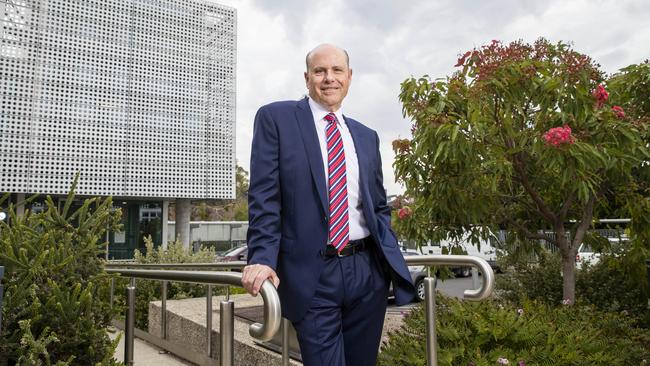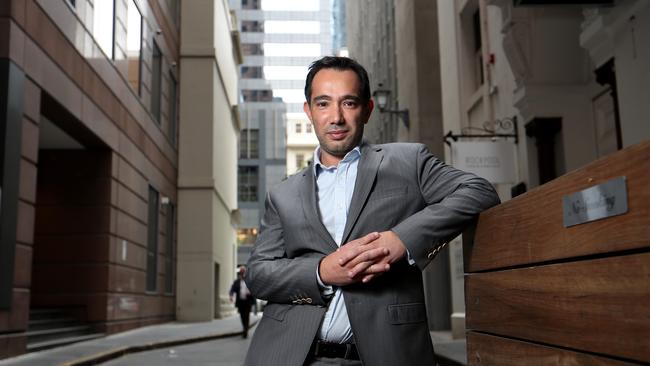Cost of a cure: would you pay millions of dollars to crush cancer and other diseases with a single jab?
CSL has created a world-first cure that is also the globe’s most costly drug — flipping the traditional model of big pharma on its head.

As CSL’s former chief executive Paul Perreault was packing up his desk in Melbourne last month there was one milestone achieved during his 10 years at the helm that could not escape his attention.
“Who thought CSL would be the first one in the world with gene therapy for haemophilia?” Mr Perreault told this masthead.
“I mean, I can tell you, a decade ago, nobody thought we would.”
CSL was originally solely in the plasma business, established in WW1 as the Commonwealth Serums Laboratory, before branching out into vaccines, floating on the ASX in 1994 and becoming not only one of the biggest companies on the Australian sharemarket but a global pharmaceutical juggernaut.
Last November it took another step in cementing its position in the cutting edge of drug development — an area it spends about $1bn a year on — when the US Food and Drug Administration approved CSL’s new treatment Hemgenix.
The drug injects a functioning copy of the blood clotting gene into a patient with haemophilia B, providing a single dose fix to the debilitating illness that plagued the European royalty in the 19th and early 20th centuries and affects about one in 40,000 males today.
Crucially, the one shot replaces a lifetime of fortnightly infusions to control the blood disorder, effectively curing a patient.
European regulators were quick to follow the US FDA in approving Hemgenix. But seemingly miraculous treatment comes at a cost — about $US3.5m ($5.23m) a dose — becoming the world’s most expensive drug.
It is one of the handful of approved gene therapies that has sparked a wave of drugs priced in the millions of dollars a patient. And the high cost of the drugs — which promise to cure or treat diseases in a single course — has raised eyebrows. After all, big pharma was previously reluctant to charge any more than six figures for a drug.
But patients say the massive expense is worth it, particularly when amortised over their lifetime. It is this rationale health funders need to face as they potentially baulk at paying the handsome fee for these groundbreaking treatments — which have been approved to not only cure blood disorders such as Haemophilia B, but also muscle wasting conditions and rare childhood neurological diseases.

Steven Yatomi-Clarke, chief executive of ASX-listed biotech Prescient Therapeutics — which has developed a targeted cellular cancer therapy for a rare and aggressive form of lymphoma — says while gene and cell treatments are expensive, they flip the traditional model of big pharma.
To put it in context, current haemophilia treatments cost $US250,000 to $US500,000 per patient, per year, for the rest of their lives.
“It‘s really flying in the face of the big pharma business model in many ways. They want someone to stay on a drug for a very long time … that’s the big pharma model,” Mr Yatomi-Clarke says.
“But gene and cell therapy throws that playbook out the window. It’s a single infusion.
“In the case of rare childhood diseases, if my child was normally not going to live past the age of eight years old, and you can cure my son or daughter, then they’re going to live a long and productive life. They’re going to be paying taxes, consuming goods and services. All of a sudden, two or $3m dollars looks to be a bargain.”
It comes as government health budgets is under pressure globally as people live longer with chronic conditions. According to the latest spending data, Australian federal and state governments spent $142.6bn on healthcare in the 2020 financial year, a 5 per cent increase on the previous year. This comprised 70 per cent of overall health spending, which totalled $202.5bn.
Across the world, health spending accounts for about 10 per cent of global GDP, and the World Health Organisation forecasts that proportion to increase to 13 per cent in coming years.
For CSL, the move into gene therapy was not as dramatic as it sounds. For years the company produced a plasma derived product that replaced the missing blood clotting factor IX in patients with haemophilia B.

CSL’s head of research and development and chief medical officer, Bill Mezzanotte, said that product “helped patients a lot”. But it required an intravenous injection about three times a week.
Then mid last decade it launched Idelvion: a recombinant factor IX product that lengthened the treatment time for patients to once every two weeks. It continues to remain popular, with sales leaping 22 per cent to $US363m in the six months to December 31.
“It’s still an IV infusion on a regular basis and we thought we could do better. And because we had deep scientific and commercial expertise, we knew what we were looking for,” Dr Mezzanotte said.
The solution was found when it licensed Dutch biotech uniQure’s gene therapy technology that underpins Hemgenix. CSL funded the later stage clinical trials and has the global rights to commercialise the treatment.
Wilsons analyst Shane Storey said the partnership allowed CSL to expand and fortify its “leadership position in haemophilia B”.
“The potential to replace more than 10 years of regular prophylactic management for these patients with a single shot of Hemgenix is a powerful driver of sector dominance, which brings with it margin expansion and sales leverage opportunities within the CSL Behring recombinant haemophilia,” Dr Wilson said in a note to investors when the FDA granted its approval.
For Dr Mezzanotte, it’s about balance and the company’s foray into gene therapy will not cannibalise its existing businesses.
“We won’t walk away from plasma therapy, we won’t walk away from recombinants. We believe they can all work together for the right patiences because even Hemgenix won’t be right for every patient,” he said, adding it had nothing to do with the gene therapy’s price.
“Not every patient would be a good candidate. Either their bleeding is not severe enough, and look, first of all, we still have to do studies in children. And people may be happy with Ildelvion the outcome they’re getting.
“So, we’ll still have Ildelvion available for many of those patients where it (Hemgenix) is not right for them.”
In regard to children, CSL’s vice president of research Michael Wilson, saying the technology underpinning Hemgenix had limitations.
“Essentially it targets the liver and the growth of the liver is the challenge that we’re trying to address in a technical sense,” Dr Wilson said, adding that while a treatment lasts years, it is still unknown if it will cover a lifetime.
“Hemgenix does not integrate into the patients DNA, which is good for safety, but in terms of long-term benefit, we still don’t know. The data so far has been impressive … but is it going to be a lifetime? Time will tell.
“It will definitely be years, not months.”




To join the conversation, please log in. Don't have an account? Register
Join the conversation, you are commenting as Logout